Imperial College
London
London, UK
Est. 1907
Ranking
#10
In the World
Times Higher Education
Est.
1907
Students
19,000
Other Rankings
- #3 in Europe and #1 in London by the 2019 “U.S. News & World Report Global Ranking”.
- #8 worldwide by the 2021 “QS World University Ranking”.
Website
"
Scientific Knowledge, the crowing Glory and the Safeguard of the Empire.
"
About
Imperial College London (legally Imperial College of Science, Technology and Medicine) is a public research university in London. Dating back to the Royal College of Chemistry’s foundation in 1845, Imperial grew out of Prince Albert’s vision of an area for culture, including the Royal Albert Hall, Imperial Institute, numerous museums, and the Royal Colleges that would go on to form the college. In 1907, Imperial College was established by Royal Charter, merging the Royal College of Science, Royal School of Mines, and City and Guilds College. In 1988, the Imperial College School of Medicine was formed by combining with St Mary’s Hospital Medical School. In 2004, Queen Elizabeth II opened the Imperial College Business School.
The college focuses exclusively on science, technology, medicine and business. The college’s main campus is located in South Kensington, and it has an innovation campus in White City, a research field station at Silwood Park, and teaching hospitals throughout London. The college was a member of the University of London from 1908, becoming independent on its centenary in 2007. Imperial has an international community, with more than 59% of students from outside the UK and 140 countries represented on campus. Student, staff, and researcher affiliations include 14 Nobel laureates, 3 Fields Medalists, 1 Turing Award winner, 74 Fellows of the Royal Society, 87 Fellows of the Royal Academy of Engineering, and 85 Fellows of the Academy of Medical Sciences.
History
Alma Mater
The Carnegie Technical Schools were founded in 1900 in Pittsburgh by the Scottish American industrialist and philanthropist Andrew Carnegie, who wrote the time-honored words “My heart is in the work”, when he donated the funds to create the institution. Carnegie’s vision was to open a vocational training school for the sons and daughters of working-class Pittsburghers (many of whom worked in his mills). Carnegie was inspired for the design of his school by the Pratt Institute in Brooklyn, New York founded by industrialist Charles Pratt in 1887. In 1912, the institution changed its name to Carnegie Institute of Technology (CIT) and began offering four-year degrees. During this time, CIT consisted of four constituent schools: the School of Fine and Applied Arts, the School of Apprentices and Journeymen, the School of Science and Technology, and the Margaret Morrison Carnegie School for Women.
The Mellon Institute of Industrial Research was founded in 1913 by banker and industrialist brothers Andrew Mellon (who went on to become U.S. Treasury Secretary) and Richard B. Mellon in honor of their father, Thomas Mellon, patriarch of the Mellon family. The Institute began as a research organization which performed work for government and industry on a contract and was initially established as a department within the University of Pittsburgh. In 1927, the Mellon Institute incorporated as an independent nonprofit. In 1937, the Mellon Institute’s iconic building was completed and it moved to its new, and current, location on Fifth Avenue.
In 1967, with support from Paul Mellon, Carnegie Tech merged with the Mellon Institute of Industrial Research to become Carnegie Mellon University. Carnegie Mellon’s coordinate women’s college, the Margaret Morrison Carnegie College closed in 1973 and merged its academic programs with the rest of the university.
The industrial research mission of the Mellon Institute survived the merger as the Carnegie Mellon Research Institute (CMRI) and continued doing work on contract to industry and government. CMRI closed in 2001 and its programs were subsumed by other parts of the university or spun off into autonomous entities.
Early years
19th century
The earliest college that led to the formation of Imperial was the Royal College of Chemistry, founded in 1845, with the support of Prince Albert and parliament. This was merged in 1853 into what became known as the Royal School of Mines. The medical school has roots in many different schools across London, the oldest of which being Charing Cross Hospital Medical School which can be traced back to 1823, followed by teaching starting at Westminster Hospital in 1834, and St Mary’s Hospital in 1851.
In 1851, the Great Exhibition was organised as an exhibition of culture and industry by Henry Cole and by Prince Albert, husband of the reigning monarch of the United Kingdom, Queen Victoria. An enormously popular and financial success, proceeds from the Great Exhibition were designated to develop an area for cultural and scientific advancement in South Kensington. Within the next 6 years the Victoria and Albert Museum and Science Museum had opened, joined by new facilities in 1871 for the Royal College of Chemistry and in 1881 for the Royal School of Mines, the opening of the Natural History Museum in 1881, and in 1888 the Imperial Institute.
In 1881, the Normal School of Science was established in South Kensington under the leadership of Thomas Huxley, taking over responsibility for the teaching of the natural sciences and agriculture from the Royal School of Mines. The school was renamed the Royal College of Science by royal consent in 1890. The Central Institution of the City and Guilds of London Institute, was opened as a technical education school on Exhibition Road by the Prince of Wales in early 1885.
20th century
–
At the start of the 20th century there was a concern that Britain was falling behind Germany in scientific and technical education. A departmental committee was set up at the Board of Education in 1904, to look into the future of the Royal College of Science. A report released in 1906 called for the establishment of an institution unifying the Royal College of Science and the Royal School of Mines, as well as – if agreement could be reached with the City and Guilds of London Institute – their Central Technical College.
20th century (cont.)
–
On 8 July 1907, King Edward VII granted a Royal Charter establishing the Imperial College of Science and Technology. This incorporated the Royal School of Mines and the Royal College of Science. It also made provisions for the City and Guilds College to join once conditions regarding its governance were met, as well as for Imperial to become a college of the University of London. The college joined the University of London on 22 July 1908, with the City and Guilds College joining in 1910. The main campus of Imperial College was constructed beside the buildings of the Imperial Institute, the new building for the Royal College of Science having opened across from it in 1906, and the foundation stone for the Royal School of Mines building being laid by King Edward VII in July 1909.
As students at Imperial had to study separately for London degrees, in January 1919, students and alumni voted for a petition to make Imperial a university with its own degree awarding powers, independent of the University of London. In response, the University of London changed its regulations in 1925 so that the courses taught only at Imperial would be examined by the university, enabling students to gain a BSc.
In October 1945, King George VI and Queen Elizabeth visited Imperial to commemorate the centenary of the Royal College of Chemistry, which was the oldest of the institutions that united to form Imperial College. “Commemoration Day”, named after this visit, is held every October as the university’s main graduation ceremony. The college also acquired a biology field station at Silwood Park near Ascot, Berkshire in 1947.
Following the second world war, there was again concern that Britain was falling behind in science – this time to the United States. The Percy Report of 1945 and Barlow Committee in 1946 called for a “British MIT”-equivalent, backed by influential scientists as politicians of the time, including Lord Cherwell, Sir Lawrence Bragg and Sir Edward Appleton. The University Grants Committee strongly opposed however, and so a compromise was reached in 1953, where Imperial would remain within the university, but double in size over the next ten years. The expansion led to a number of new buildings being erected. These included the Hill building in 1957 and the Physics building in 1960, and the completion of the East Quadrangle, built in four stages between 1959 and 1965. The building work also meant the demolition of the City and Guilds College building in 1962–63, and the Imperial Institute’s building by 1967. Opposition from the Royal Fine Arts Commission and others meant that Queen’s Tower was retained, with work carried out between 1966 and 1968 to make it free standing. New laboratories for biochemistry, established with the support of a £350,000 grant from the Wolfson Foundation, were opened by the Queen in 1965.
20th century (cont.)
–
In 1988, Imperial merged with St Mary’s Hospital Medical School under the Imperial College Act 1988. Amendments to the royal charter changed the formal name of the institution to The Imperial College of Science, Technology and Medicine and made St Mary’s a constituent college. This was followed by mergers with the National Heart and Lung Institute in 1995 and the Charing Cross and Westminster Medical School, Royal Postgraduate Medical School (RPMS) and the Institute of Obstetrics and Gynaecology in 1997, with the Imperial College Act 1997 formally establishing the Imperial College School of Medicine.
The 21st century
Present
In 2003, Imperial was granted degree-awarding powers in its own right by the Privy Council. In 2004, the Imperial College Business School and a new main entrance on Exhibition Road were opened by Queen Elizabeth II. The UK Energy Research Centre was also established in 2004 and opened its headquarters at Imperial. On 9 December 2005, Imperial announced that it would commence negotiations to secede from the University of London. Imperial became fully independent of the University of London in July 2007.
In April 2011, Imperial and King’s College London joined the UK Centre for Medical Research and Innovation as partners with a commitment of £40 million each to the project. The centre was later renamed the Francis Crick Institute and opened on 9 November 2016. It the largest single biomedical laboratory in Europe. The college began moving into the new White City campus in 2016, with the launching of the Innovation Hub. This was followed by the opening of the Molecular Sciences Research Hub for the Department of Chemistry, officially opened by Mayor of London, Sadiq Khan in 2019. The White City campus also includes another biomedical centre funded by a £40 million donation by alumnus Sir Michael Uren.
Show Less
Campus
Imperial’s main campus is based in South Kensington. Notable buildings include the Royal College of Science, the Royal School of Mines, the Business School, and the Queen’s Tower, which sits is at the heart of the campus. As part of Albertopolis, a cultural centre based on the vision of Prince Albert, the campus is surrounded by many of London’s most popular cultural attractions including the Royal Albert Hall and Kensington Palace, museums including the Natural History Museum, Victoria and Albert Museum, and Science Museum, and institutions such as the Royal College of Art, the Royal College of Music, and the National Art Library.
Notable Alumni

Sir Cyril Norman Hinshelwood
British physical chemist; Nobel prize laureate.
Imperial College London
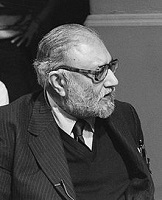
Mohammad Abdus Salam
Theoretical physicist; Nobel laureate along with Sheldon Glashow and Steven Weinberg for electroweak unification theory.
Imperial College London

Alexander Fleming
Physician and microbiologist; Nobel laureate in physiology or medicine with Howard Florey and Ernst Boris Chain.
Imperial College London

Patrick Blackett
Experimental physicist; known for cloud chambers, cosmic rays, and paleomagnetism; Nobel laureate.
Imperial College London

Sir William Crookes
British chemist and physicist; invented the Crookes tube.
Imperial College London
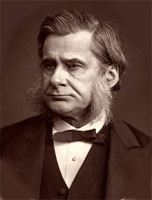
Thomas Henry Huxley
Biologist and anthropologist.
Imperial College London

Sir John Brian Pendry
English theoretical physicist; professor of theoretical solid state physics at Imperial College London; Kavli Prize awardee.
Imperial College London
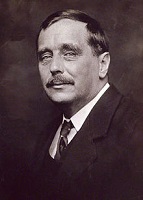
H. G. Wells
English writer; often called “father of science fiction”.
Imperial College London

Sir Geoffrey Wilkinson
Nobel laureate English chemist; pioneered inorganic chemistry
Imperial College London
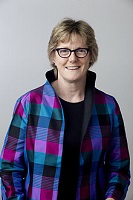
Sally Davies
British physician and academic administrator; chief medical officer for England
Imperial College London

Brian May
English musician, singer, songwriter, record producer, and astrophysicist; lead guitarist for Queen
Imperial College London

Peter Higgs
British theoretical physicist; Nobel laureate for his work in subatomic particles.
Imperial College London

Robert Maurice Lipson Winston
ritish professor; medical doctor; scientist; television presenter and Labour Party politician.
Imperial College London
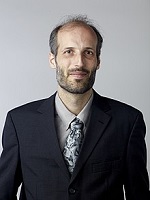
Sally Davies
Austrian mathematician; He is Professor of Mathematics at Imperial College London; warded the Fields Medal.
Imperial College London
FAIR USE STATEMENT
This page may contain copyrighted material the use of which has not always been specifically authorized by the copyright owner. Most of the time, however, we give credits to the author of quotes, photos and other related materials. We sourced these materials from various internet sites, in an effort to advance understanding of environmental, political, geographical, anthropological, biological, human rights, economic, democratic, scientific, cultural and social justice issues, etc.
Source:
https://www.imperial.ac.uk/
https://en.wikipedia.org/wiki/Imperial_College_London
https://www.timeshighereducation.com/
https://www.topuniversities.com/